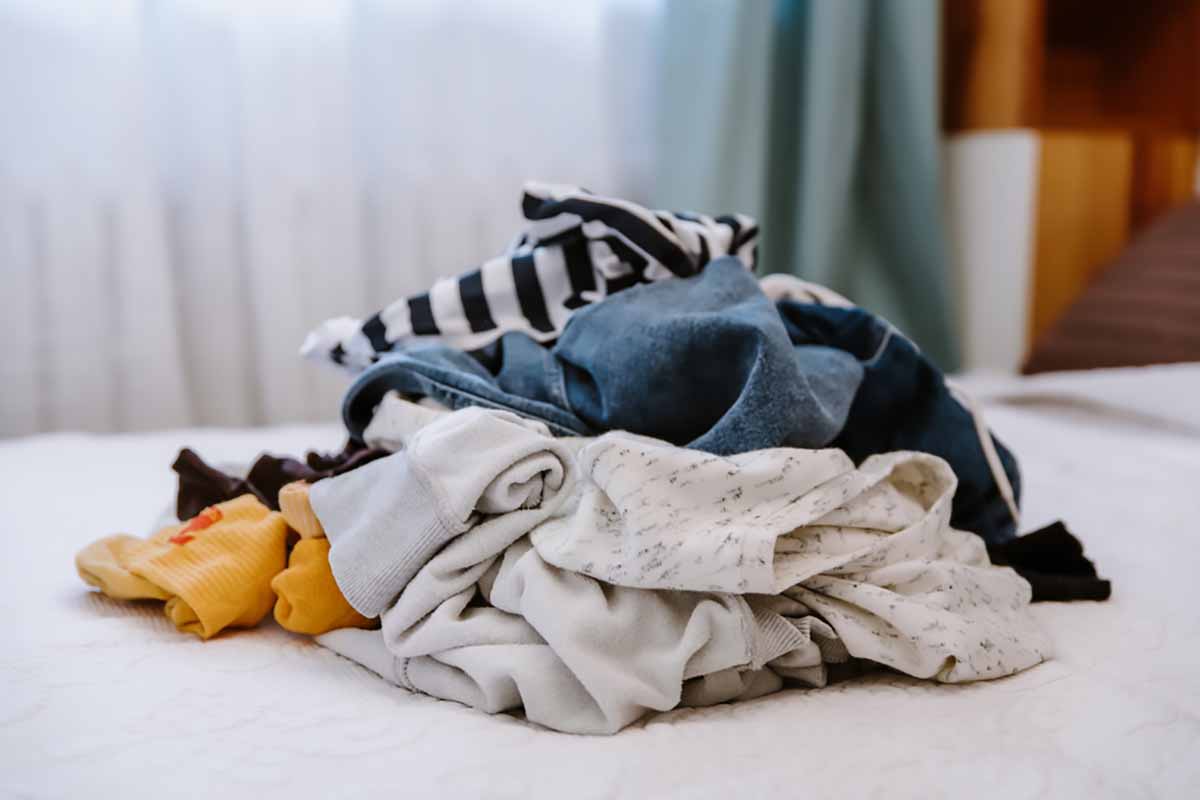
No longer my size and too short for my little sister, the polka-dotted yellow dress makes its way to the purple suitcase in our basement. Now half full, the suitcase is piled with dresses, tops, pants, and skirts, like a cargo ship being loaded at the docks. The purple suitcase is full of stories: the white button-up I wore to every single band concert in middle school, the poofy red dress my sister wore to her first birthday party at Chuck E. Cheese, the blue-striped pajama pants I lived in for a full week after my first break. The list goes on.
When the suitcase is stuffed with clothes and memories, it gets shipped to India, where my cousins give them a second (or sometimes third) life, and repeat the cycle with their extended family, and so on, across an ocean and through the generations of our extended family.
Eventually, once a piece of clothing has surpassed its wearable life-cycle, it becomes a rag or a pocha for cleaning. In our culture, there is no “throwing away,” you simply use until you no longer can.
Shared clothing, shares experiences

Ananya Chandra
Every so often, someone in our WhatsApp family group chat shares photos, and I recognize a top or a skirt and smile to myself. Last year, I remember my aunt sharing a clip of my little cousin doing a school presentation on the circulatory system and, sure enough, there she was in a familiar white button-up. I wondered whether she was as nervous as I was when I last wore that top, performing in front of a crowd. I wondered whom the button-up would go to next, what they’ll be feeling and experiencing when they wear it, and what stories this white button-up would go on to experience.
As a second-generation American with no family here in the states, keeping close connections with my extended family can be difficult. The distance, in combination with language barriers, serve as obstacles but also as motivation to find new ways to bond. By passing clothing down, ordinary pieces turn into shared experiences, linking us together from opposite sides of the world. My family’s culture of hand-me-downs is just one example of how sustainability is woven into the fabric of our customs and upbringing. Sustainability is more than carrying around a tote bag with a reusable bottle. It’s about the impact of our everyday lifestyle choices.
The COVID-19 pandemic has revealed to us just how fragile our earth system is and how interconnected we are to one another and to our environment. As we recover from the damage inflicted by 2021 and shift our focus to other crises, including climate change, it is crucial that we think critically about our role as consumers and our impact on the planet.
Hyper-consumerism is embedded in U.S. culture, making it ever more important for the fashion industry to employ aggressive and innovative strategies to mitigate their impacts on the environment.
Environmental cost of fast fashion
The textile industry is one of the most emissions-costly sectors in the global economy. The fashion sector alone was responsible for about 2.1 billion metric tons of greenhouse gas (GHG) emissions in 2018, about 4% of the global total. To put this in perspective, the industry’s GHG emissions are roughly equivalent to those of the entire economies of France, Germany, and the United Kingdom combined. This volume of emissions, in combination with the quantity of non-biodegradable synthetic fibers being generated due to the popularization of fast fashion trends, has caused mountains of clothing to pile up in landfills. Fast fashion, clothing that is produced inexpensively by mass-market retailers in response to fickle mainstream trends, has increased the demands of the textile market; the average consumer today purchases 60% more clothing compared with 2000, but each garment is only kept half as long.
We are purchasing much more than we are capable of using, and the rate at which we are disposing of unwanted clothing is increasing alarmingly. In fact, three-quarters of all non-biodegradable fabrics end up in landfills or incineration plants, as there is no plausible way to recycle them. Hyper-consumerism is embedded in U.S. culture, making it ever more important for the fashion industry to employ aggressive and innovative strategies to mitigate their impacts on the environment.
We consumers must also look introspectively and strategize how to collectively use our individual power to our advantage. Rather than contributing to the growing problem of climate change, we can shop ethically – researching where and how brands source their textiles – and purchase pieces that have a longer lifespan, stretching across multiple generations. This can also be done through shopping and donating clothes at thrift and consignment stores, which keeps them out of landfills for longer.
Many social media influencers are making strides in this shift toward sustainability. Individuals such as Aditi Mayer, Green Girl Leah, and Diandra Marizet center their environmentalism and advocacy around intersectionalism, examining the nexus of environmental issues and the BIPOC (Black, Indigenous, and People of Color) experience. Many of these influencers also look at sustainability from the lens of consumerism; people like Levi Hildebrand break down sustainability measures made by major brands and The Consistency Project curates and repurposes clothing into unique second-hand pieces. These are just a few examples of some exemplary voices weaving the path toward a clean and equitable future, but you, too, can join the movement.
Together, we can beat the second-hand stigma, one purple suitcase at a time.
Ananya Chandra is a student of environment, sustainability and policy at the Renée Crown University Honors Program at Syracuse University. Chandra participated in the Young Voices of Science program through the Hubbard Brook Research Foundation.



